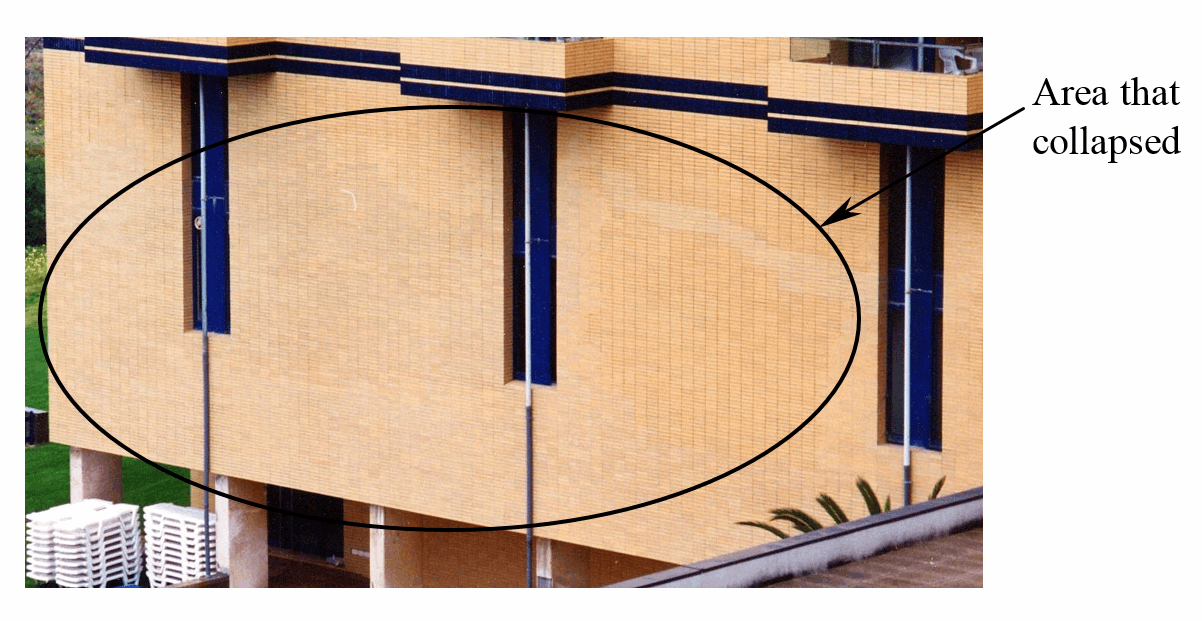Vasco Peixoto de Freitas[1], Paulo da Silva Pinto[2]
- Associated Professor and Head of Building Physics Laboratory at Faculty of Engineering, Faculdade de Engenharia da Universidade do Porto – Laboratório de Física das Construções – Rua Dr. Roberto Frias – 4200-465 Porto. Portugal. vpfreita@fe.up.pt.
- Civil Engineer, Faculdade de Engenharia da Universidade do Porto – Laboratório de Física das Construções – Rua Dr. Roberto Frias – 4200-465 Porto. Portugal. pspinto@fe.up.pt.
ABSTRACT
In Portugal, hollow clay brick masonry is a very traditional solution for building walls. However, in some recent construction, we have registered some pathologies related with the clay expansion due to hygrothermal actions, particularly in building envelope walls.
Beside the numerous cracking problems registered in the cases we have analyzed, we have also detected many instability problems in the building envelope walls, which even resulted in the collapse of a significant area of a building façade.
In spite of not being a recent problem, only in the last years it has assumed some expression in our country, fact that can be related with some recent solutions for the building envelope walls, where the outside layer of the masonry, unlike the traditional solutions, is not totally confined with the structure elements, usually in concrete.
In this paper we will present three cases where this phenomenon has been detected, according with the following structure: description of the observed pathologies, prospecting and measuring actions, possible causes of the analyzed problems and rehabilitation proposals.
The buildings have distinct purposes, namely a hotel, a theater and a cottage complex.
Key words: masonry, clay brick, moisture, expansion, pathology, cracking.
BMOIST01



